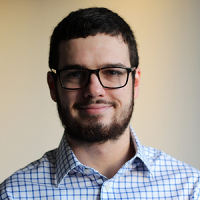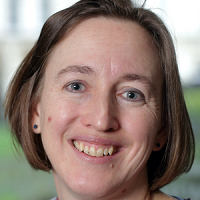Dr Jim Denholm & Dr Elizabeth Soilleux, University of Cambridge Computer vision diagnosis of coeliac disease
In the majority of cases, an endoscopy with a biopsy of the small intestine is needed to diagnose coeliac disease. Biopsies are examined by a trained pathologist, a process that can be time consuming and subjective, with different opinions in up to 25% of cases. In addition, results are filed individually with no opportunity to learn from patterns or similarities in the biopsies. This talk will share updates from Coeliac UK funded research which aims to develop an artificial intelligence solution to improve the accuracy and speed of diagnosis of coeliac disease.
Biography
Dr Jim Denholm
 Jim Denholm completed an integrated Master's degree programme at the University of Strathclyde, Glasgow between 2011 and 2016. He then remained at Strathclyde to pursue a PhD in statistical physics from 2016 to 2020. His thesis examined the time evolution of magnetic systems after being suddenly cooled from disordered to magnetically ordered phases. The models used to explore this problem, the Ising and Potts models, have strong parallels with image analysis. Jim has a long history of suspected coeliac disease, though has never obtained a formal diagnosis. After his PhD, he joined Lyzeum Ltd, where he works on the problem of diagnosing coeliac disease from an image analysis perspective. His current work involves training deep learning models to examine and predict whether dudoenal biopsies contain evidence of coeliac disease or not, with the overarching aim of producing a diagnostic tool which could be used by pathologists to yield more reliable diagnoses.
Jim Denholm completed an integrated Master's degree programme at the University of Strathclyde, Glasgow between 2011 and 2016. He then remained at Strathclyde to pursue a PhD in statistical physics from 2016 to 2020. His thesis examined the time evolution of magnetic systems after being suddenly cooled from disordered to magnetically ordered phases. The models used to explore this problem, the Ising and Potts models, have strong parallels with image analysis. Jim has a long history of suspected coeliac disease, though has never obtained a formal diagnosis. After his PhD, he joined Lyzeum Ltd, where he works on the problem of diagnosing coeliac disease from an image analysis perspective. His current work involves training deep learning models to examine and predict whether dudoenal biopsies contain evidence of coeliac disease or not, with the overarching aim of producing a diagnostic tool which could be used by pathologists to yield more reliable diagnoses.
Biography
Dr Elizabeth Soilleux
 Liz Soilleux is an associate professor and honorary consultant in pathology at the University of Cambridge. Aside from her clinical practice and university teaching roles, her research interests lie in identifying novel methods for the diagnosis of both coeliac disease and T-cell lymphoma, with a particular focus on molecular immunology and the application of novel mathematical algorithms to digital images and bioinformatic data. Her research team’s aim is to improve the objectivity of diagnosis and efficiency of workflow, perhaps with future automation of aspects of diagnostic histopathology.
Liz Soilleux is an associate professor and honorary consultant in pathology at the University of Cambridge. Aside from her clinical practice and university teaching roles, her research interests lie in identifying novel methods for the diagnosis of both coeliac disease and T-cell lymphoma, with a particular focus on molecular immunology and the application of novel mathematical algorithms to digital images and bioinformatic data. Her research team’s aim is to improve the objectivity of diagnosis and efficiency of workflow, perhaps with future automation of aspects of diagnostic histopathology.